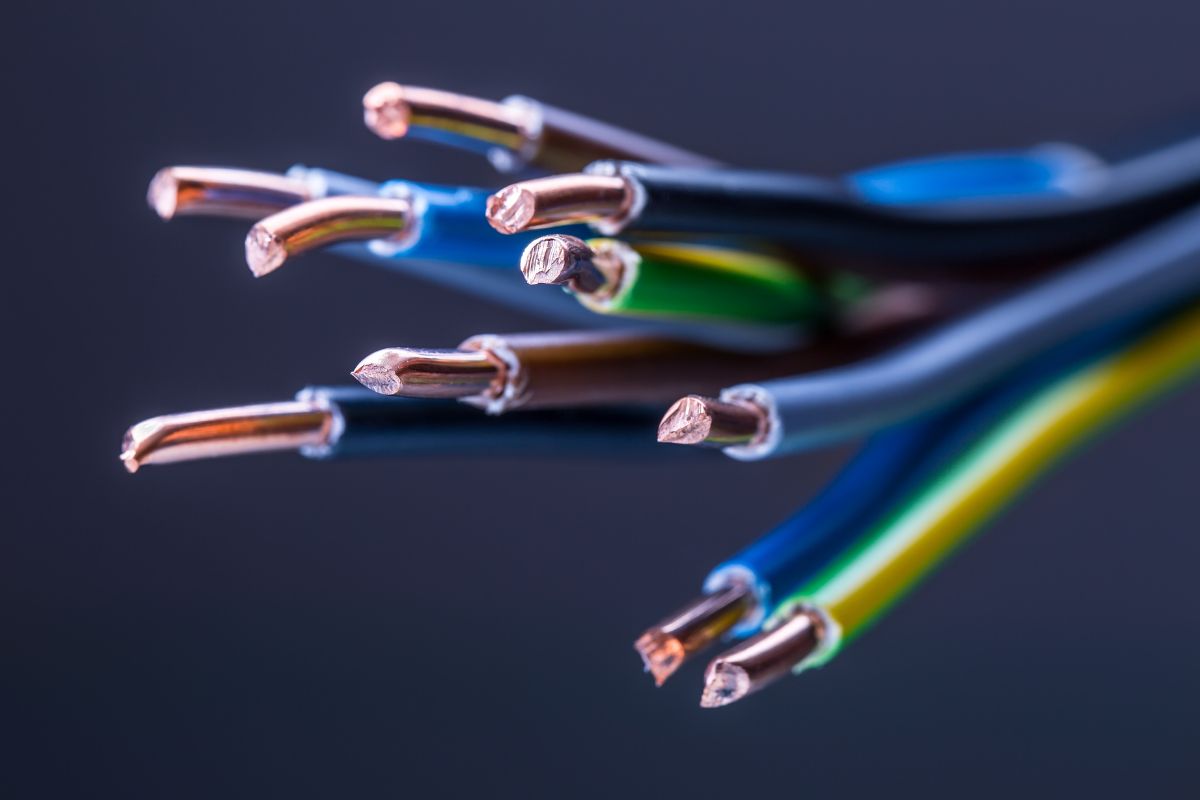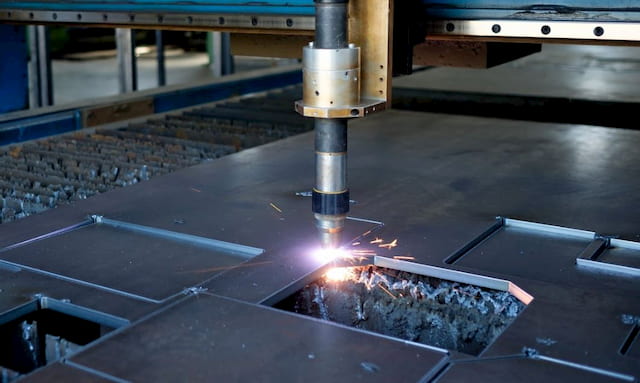The plasma cutting process is a very useful and effective method of metalworking. A great alternative to the traditional methods of fabricating, it has several advantages that set it apart from other types of machining processes.
One such advantage is its ability to cut various metals with minimal effort while at the same time producing high-quality results. Its fast operation also allows quick turnaround times, making it a popular choice for many fabricators.
There are several factors to consider when choosing a plasma cutting machine.
This article will help you learn what plasma cutting machines are and how they work. We’ll also discuss equipment considerations like shielding gas types, type of steel plate, and more.
What Is Plasma Cutter?
Plasma cutting is a process that uses an electrical arc to cut through metal. The plasma arc is created by introducing gas between two electrodes; one cathode and one anode.
Using electricity, the cathode emits electrons which ionize (gain negative charge) atoms/molecules of gas used in this process (usually air). The ionized gas becomes a conductor, allowing electricity to pass through it, resulting in an electrical arc.
This process removes material from the workpiece rapidly and efficiently so that you can have your desired product in no time.
Plasma Cutting Process- How Does It Work?
The plasma cutting process begins with the machine operator setting the required parameters into the cutter. These include voltage, amperage, and gas type. The workpiece is then clamped or bolted to a table, and the area to be cut is focused on by adjusting the height and position of the torch.
The electrode and the workpiece create a pilot arc. Once the pilot arc is established, the main cutting arc will be created by increasing the voltage to a level that will cause the gas to break down and create plasma.
The distance between the torch and plate (or other material) determines how much heat is applied- too close, and you’ll char or melt your material, too far, and you’ll lose power.
When the torch is moved across the surface of your workpiece, it will melt through the material on its path due to plasma channeling (the natural tendency for electricity to follow a straight line). This process allows us to cut intricate shapes in metals with no burrs or slag.
Plasma Cutting Equipment and Considerations
Plasma cutting equipment is used to generate plasma to cut through metal. It can be cut with a hand-held torch or automated machinery.
Hand torches are great for small cuts but do not use them too much because they tend to wear out quickly and consume lots of power/gas consumption. Automatic machines cost more initially, but they can make large cuts much faster with less operator fatigue.
Also Read: Hair loss and Platelet Rich Plasma
When choosing a plasma cutter, you’ll need to consider the following factors:
Plasma Cutting Machine Type
The first thing you’ll want to think about when it comes time to purchase your machine is what sort of plasma cutter you need. There are three types of machines:
The first type is a hand-held torch
This is great for small, precision cuts; however, it can be tiring to use over long periods, and the consumables (i.e., tips, electrodes, nozzles) tend to wear out quickly.
A second type is a CNC machine
This is a computer-controlled machine that can make large, precise cuts. It’s great for heavy-duty use, but it can be expensive to purchase and operate.
The third type is an automated plasma cutter
This machine runs on electricity and uses programmed motions to make accurate cuts. It’s great for large-scale fabrication and heavy-duty use; however, it can also be expensive and requires a lot of power (which means more money on your energy bill).
Shielding Gas Type(s)
The shielding gas is used to protect the electrode and workpiece from contamination. The three most common types of shielding gases are:
Air: This is the cheapest and most easily accessible type of shielding gas, but it doesn’t produce the best results.
Nitrogen: Nitrogen produces cleaner cuts and helps extend electrode life. However, it is more expensive than air and tends to be used when cutting stainless steel.
Argon: Argon produces the cleanest cuts, but it can also cost hundreds of dollars per cylinder. It’s a great option for serious plasma cutters who will use their machine often/for very long periods, though.
Cut Speed and Quality
The cut quality and speed will vary depending on the type of metal you are cutting. One of the best ways to find out what your machine is capable of is to test it on different types of steel plates.
In general, thicker steel plates will result in slower cuts, but they will be much cleaner and more precise than thinner ones.
Power Requirements
The power requirements of your plasma cutter will depend on which type of workpiece you are working with. It’s important to consider the following factors when figuring out how much power you’ll need:
Type of workpiece: Sheet metal, tubing, and structural steel will require different amounts of power.
Cutting speed: The slower you cut through your workpiece (and the thicker it is), the more power you’ll need to have a clean cut. Abrasive cutting can also change how much power your machine needs.
Material type: Different metals like copper and stainless steel will require different power to cut through.
Plate Thickness
Plate thickness is another factor to consider when buying a plasma cutter. The following formula can determine standard start-up and operating voltage:
Start-Up Voltage + (0.0035 * Plate Thickness) = Operating Voltage
You’ll need to make sure your machine has enough power for thicker materials, or you will not get the desired results.
Other Equipment Considerations
There are a few other things you’ll want to think about when choosing your plasma cutter equipment, including the type of gas supply system, electrode life expectancies, quality of the product overall, etc.
Summing up
To make a clean and precise cut with a plasma cutter, you need to have the right equipment and settings. By considering all of the different factors involved in the process, you can choose the best machine for your needs and start cutting metal like a pro.
















